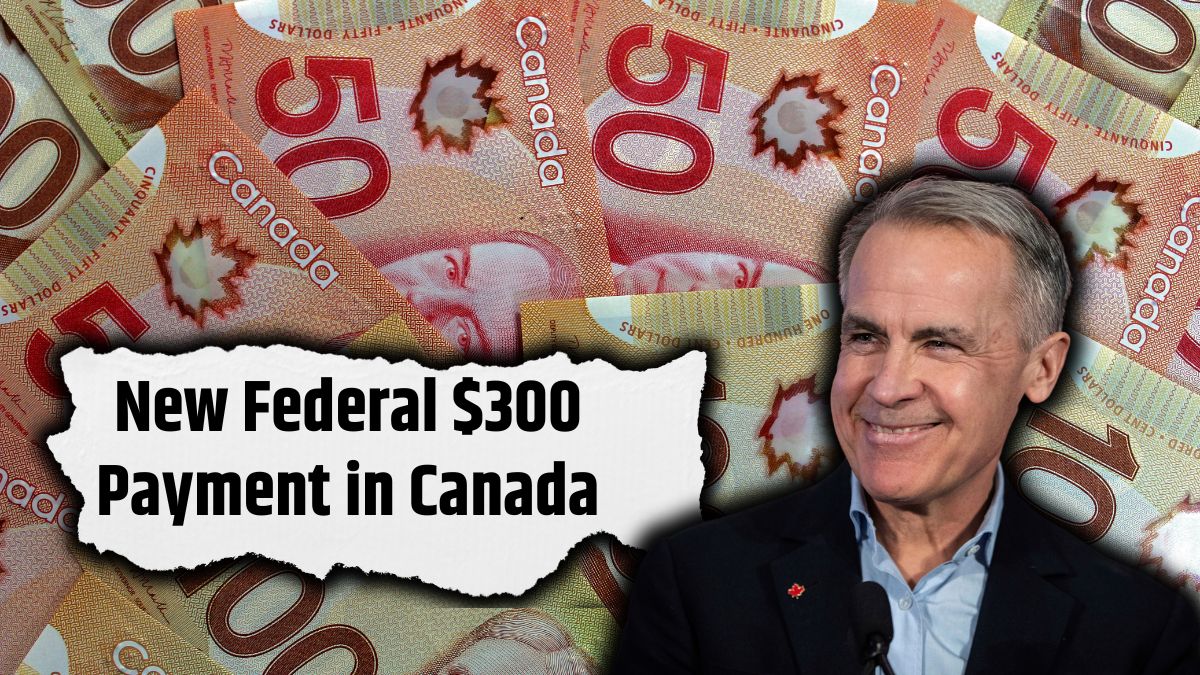Among the ongoing financial measures is the $300 federal payment, which has gained attention in 2025 for its role in helping low-income individuals, seniors, and families manage daily expenses.
This article breaks down what the $300 federal benefit is, who qualifies, how it works, payment schedules, and the most recent government updates.
What Is the $300 Federal Payment in Canada?
The $300 federal payment is not a new or standalone benefit. Instead, it is an additional top-up or enhanced amount provided through existing federal programs. These programs include:
- Canada Workers Benefit (CWB)
- Goods and Services Tax Credit (GSTC)
- Old Age Security (OAS)/Guaranteed Income Supplement (GIS)
- Climate Action Incentive (CAI)
In 2025, this $300 figure generally refers to:
- A one-time payment for qualifying seniors or workers
- A quarterly GST credit boost for low-income households
- An additional CAI rebate, especially in provinces where the carbon pricing system is federally managed
Essentially, the $300 support is being provided under different names and schedules, but all aim to tackle the impact of inflation and affordability concerns in Canada.
Who Is Eligible for the $300 Federal Payment in 2025?
Eligibility depends on the specific federal benefit program under which the payment is distributed. Here’s how eligibility breaks down across different categories:
Seniors Receiving OAS or GIS
- Must be 65 years or older
- Currently receiving Old Age Security (OAS) or Guaranteed Income Supplement (GIS)
- Meet low-income thresholds based on individual or couple status
- Filed a 2024 income tax return
Low-Income Workers
- Eligible under the Canada Workers Benefit (CWB)
- Income falls within CWB guidelines
- Must have filed a 2024 tax return to be automatically assessed
Individuals and Families Eligible for GST/HST Credit
- Must qualify for the GST/HST Credit
- Adjusted family net income must be within the qualifying range
- Aged 19 years or older, or have a spouse/common-law partner or dependent child
- Filed a 2024 tax return
Climate Action Incentive (CAI) Recipients
- Residents of provinces where carbon pricing is federally managed (e.g., Alberta, Ontario, Saskatchewan, Manitoba)
- Filed a 2024 tax return
- Payment amount depends on household size and location
$300 Payment Dates and Disbursement Schedule [2025 Timeline]
The $300 may arrive on different dates depending on which program you qualify under. Here’s a helpful summary of the estimated July 2025 payment schedule:
| Program | Estimated Date | Amount | Payment Type |
|---|---|---|---|
| Canada Workers Benefit | July 12, 2025 | $300 (Advance Payment) | Automatic for eligible workers |
| GST/HST Credit | July 5, 2025 | Up to $300 (Boosted) | Quarterly income-tested payment |
| OAS/GIS Supplement | July 29, 2025 | $300 (Top-Up) | For low-income seniors |
| Climate Action Incentive | July 15, 2025 | $300 (individual/couple) | Based on household size |
Note: Amounts may vary based on income, marital status, family size, and province of residence.
How to Receive the $300 Payment: Do You Need to Apply?
Automatic Enrollment for Most
The majority of Canadians who qualify do not need to apply separately for this payment. As long as you:
- Filed your 2024 tax return, and
- Meet the program’s eligibility criteria
then CRA or Service Canada will automatically issue your payment based on your file.
What If You Haven’t Filed Yet?
If you haven’t filed your 2024 taxes, you may miss out on this benefit and future ones. Here’s what to do:
- File your return immediately—even if your income is low
- Use free tax clinics or your CRA My Account to submit electronically
- Check for automatic benefit eligibility notices on your CRA dashboard
Filing is the key trigger for nearly all federal income-tested benefits, including this $300 top-up.
Key Government Announcements and 2025 Updates
The Canadian government has reaffirmed its commitment to making life more affordable amid ongoing inflation.
Here are major updates as of mid-2025:
- OAS payments increased by 3.5% starting Q3 2025
- Canada Workers Benefit (CWB) thresholds raised to cover more low-income earners
- GST Credit expanded to include more households under financial stress
- Most top-ups, including this $300 payment, are non-taxable and do not reduce other provincial benefits
These measures show that the $300 benefit is part of a broader affordability plan to stabilize financial well-being across all provinces.
Why This Payment Matters in 2025
As grocery bills, rent, and utility costs continue to climb, many Canadians rely on these federal supplements just to stay afloat.
Whether you are:
- A retired senior,
- A working parent, or
- A young adult starting out on low wages,
this $300 benefit could be a crucial financial buffer.
It’s important to regularly monitor official announcements, file taxes on time, and understand which programs you’re enrolled in to avoid missing such benefits.
Frequently Asked Questions (FAQs)
Q1. Will all Canadians receive the $300 federal payment in 2025?
No. This is a targeted payment, only issued to those who meet eligibility criteria under programs like CWB, OAS, or GST/HST Credit.
Q2. Do I need to apply to receive the $300?
In most cases, no. If you’ve filed your 2024 tax return and qualify under any program, the payment is processed automatically.
Q3. Is the $300 benefit considered taxable income?
No. The payment is non-taxable and won’t impact your eligibility for other income-based benefits.
